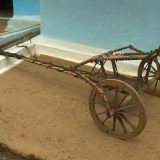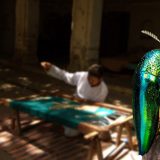Dhalapathara ( saree weaving)
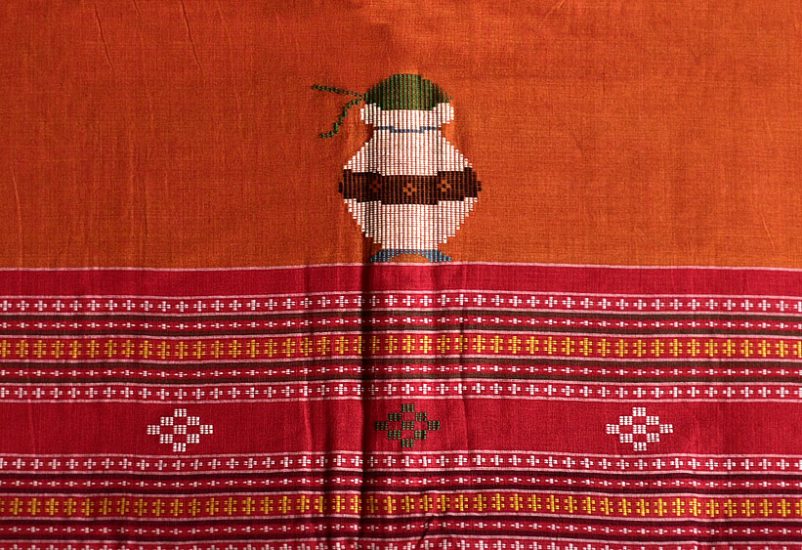
Bandhu Das, while making tea for his customers, often overhears their chitter-chatter. They usually discuss politics, local football tournaments or wives! Amid such heated conversations and a strong temptation to spit out his usually off the mark comments, Bandhu makes sure to slip in his perspective while serving tea.
One fine afternoon, when a customer was ranting to his friends about how his wife never likes any of the gifts he gets her… Bandhu’s sharp ears caught the conversation and his face lit up with a smirk…. a wife not liking gifts was completely foreign to him!

Every year Bandhu makes, among many others, a Dhalapathara saree for his wife, which she absolutely adores. Her excitement is quite evident when she flaunts her new attire in Raja Parba and Gandhalepana Yatra. He is the only one left in his village with the knowledge of weaving a Dhalapathara. Like his baba, who taught him the art of weaving & gifting, he sometimes wishes he could spend the entire day on his loom and weave beautiful fabrics straight out of his imagination! But practicality kicks in and he remembers that there aren’t as many people left to pay to keep his dream alive and then he has a family too now…
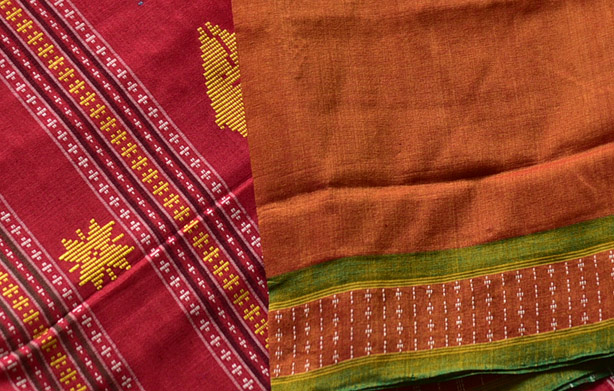
He reminisces about the glory once held by the Rangani community, which used to bloom with talented weavers and how when it came to the best bridal attire, Dhalapathara saree used to be the first choice of everyone. Dhalapathara, literally meaning white stone, was at its peak from late 1800s to mid 1900s. It was a regular at weekly markets of Bhubhuneshwar, Calcutta, Sonepat, even in Madhya Pradesh during the 1950s. Oh! the traders from Kolkata used to drool over these Dhalapathara sarees!
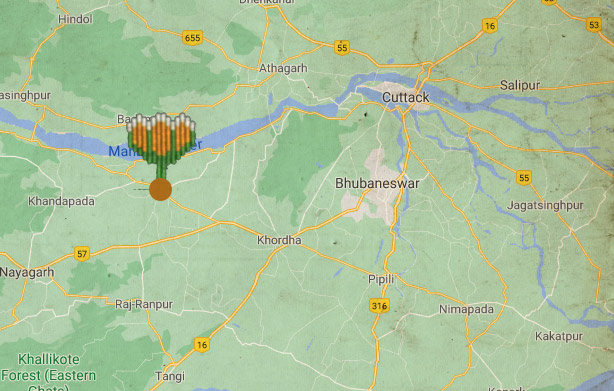
Rangani weavers weave cloth with a unique weaving technique ‘Rang’ means colour and ‘Ani’ means to bring- the name suggests the one who knows how to bring out colours on fabric. A Dhalapathara is woven without any jala, jacquard or dobby. With this technique, they weave sarees, curtains, Lungi, towels (gamcha) etc. These fabrics are hand spun using naturally dyed threads. The saree got its name from the place of its origin Dhalapathar in Khurdha district of Odisha. They are woven mostly in contrasting Colors and are popularly known by their design motifs such as Kusumi Kapta, Kankana Pedi, Muktapunji, Nahati & Akhata. Purchased from weaver Shri Nityaanada Mekap, a Kusumi saree displayed in Orissa’s State Museum is the only relic of the saga known as Dhalapathara on display for people to get familiarised with.
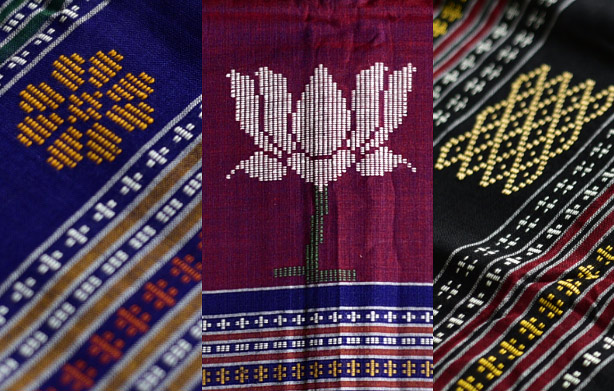
To weave such cloth with jacquard would require 400-600 hooks but the Dhalapathara weavers weave it with the help of ‘Chiari’ (wooden stick). The fabric used to be woven with the help of warp rib structures or wooden planks known as ‘Chiari’. It is a rare weaving technique that incorporates shedding and picking of an extra weft.
The process of strengthening the thread is called sizing & is carried out by putting hank inside a pot which contains 2-3 days old rice water. Pressure is applied on the rice as well as the hank with two hands of the worker in such a way that the water rice is converted into a paste and sticks to the individual threads of the hank. Then the hank is squeezed and taken out and dried in shadow over a bamboo bar. During drying, the hanks are subjected to separation of threads by applying tension on hanks around the bamboo which facilitates easy winding of bobbins for warps.

The beams used in Dhalapathara weaves are made up of sal wood and a required number of warp thread are wound around depending upon the length of the fabric to be woven. After warping, weaver insert the chiaris (wooden stick) just behind the shaft in the warp by making warp threads in two layers ( four up one down or six up one down). Depending upon the color and motifs, different weft ribs (Rib weave uses one heavyweight yarn.) are formed in shedding using the chiaris. Depending upon the intensity of the design, a varying number of chiaris can be used.

The art of Dhalapathara is beautiful and even more beautiful is its history. The designs were extremely sharp and so accurate that it seems impossible that these sarees could have been made with hands. These weavers were so skilled that they could create these exquisite designs without using any graphs.The weft rib (Produces Cord or Rib in the warp direction) effect gave the beautiful multicolour effect. Nowadays, weavers take graphs to weave designs with accuracy.
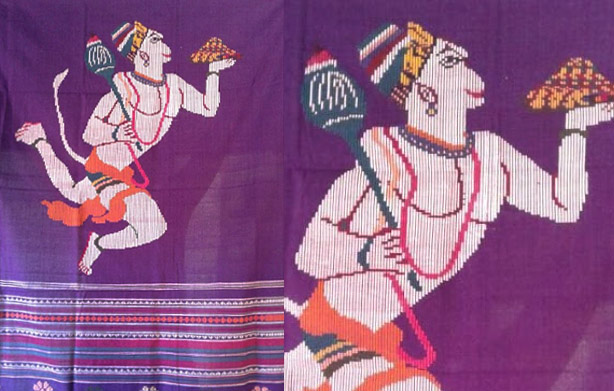
The onset of power looms took away jobs of weavers. These looms could make more sarees in less time. Love of hands was lost forever in the way these fabrics felt to the touch but this compromise was largely acceptable to people… gradually trading quality for the lust of variety. Ganesh Pujari ji and Udayanath Sahu renewed the craft respectively as ‘Parda’ or curtain in 1936 and created beautiful designs of Lord Krishna, Lord Hanuman, Taj Mahal, sunset sceneries, Gautam Buddha, Maps etc in weaving. These Pardas were beautiful, so their demand rose again. This art is more than just art, it’s a way of living life for artisanal families as well as for those who still choose love & quality over a variety of inferior things, and live life minimally. However, there’s only a fraction of the audience who believe in and live by such refined ideologies… practising restraint in the face of temptations to pick everything and anything in the name of variety. Only a few artisan like Shri Braja Bandhu Routi therefore continue today at the age of seventy five… practising for the love of art.
In 2012, Dhalapathara sarees were awarded the GI tag but the status too couldn’t be effective in safeguarding the craft. Bandhu snapped out of his day dreaming as he overheard a group of buyers discussing the colour of sarees, they would have wanted to match the decor of the ceremony…. “Dhalapathara sarees are meant to stand out in contrast and not match its background….” Said he… out of place, dazed, with a smirk on his face, amid a crowd caught up in the heat of discussion and entangled somewhere in the frown lines of situations, less inflicted by life than their own imagination…
Information & Images by ~Nirguna

